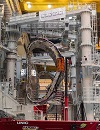NPP
Fourth unit of the Bilibino NPP connected to grid
 First concrete poured at unit 4 at Leningrad NPP-2
First concrete poured at unit 4 at Leningrad NPP-2
On March 20, 2025, the first concrete was poured for the foundation of the reactor building at Unit 4 of Leningrad NPP-2. The construction is part of the capacity replacement program at the plant, a subsidiary of Rosenergoatom, Rosatom Electric Power Division.
Representatives from the Belarusian NPP, El Dabaa NPP (Egypt), and Rooppur NPP (Bangladesh) participated in the first concrete ceremony via videoconference. These countries have power units with reference Russian VVER-1200 reactors that they have constructed or are constructing with the support of Rosatom.
During the ceremony, nuclear specialists from partner nations shared updates on their projects in 2024 and extended their best wishes for the successful...
Planned repair of transformers of the fifth power unit began at the Zaporozhye NPP
Sixth unit of the Leningrad NPP will be stopped for planned overhaul
Second unit of the Belarusian NPP has been put into operation
The third unit of the Leningrad NPP has been put into planned overhaul
Capacity of a number of Russian units will be reduced during the New Year holidays
The fourth unit of the Kalinin NPP will be shut down on January 1, 2025 for maintenance
Rostov NPP fulfilled the state task of the Federal Antimonopoly Service of Russia on electricity generation ahead of schedule
Total electricity generation of the Belarusian NPP has reached 30 billion kWh
At the fourth block of the Rostov NPP, the backup diesel power plant was modernized
Pilot operation in 18-month cycle has been completed at sixth unit of Novovoronezh NPP
Kalinin-2 unit will be shut down for scheduled repairs with equipment modernization
Kalinin NPP has generated 750 billion kWh of electricity since the beginning of operation
At the construction site of the Kursk NPP-2, the installation of the domed part of the outer containment shell of power unit No. 1 was completed
 Eurostat - data for 2021
Eurostat - data for 2021
The Eurostat (statistical service of the European Union) has updated data on the state of the nuclear industry in the EU countries, taking into account the results of 2021.
In total, 106 nuclear power units were operated in 13 EU countries in 2021. If the EU were considered as a single state, it would become the world leader in the number of units, bypassing the United States.
The share of nuclear power plants in 2021 accounted for 25.2% of the total electricity generation in the EU countries. In absolute terms, nuclear generation amounted to 731.701 billion kWh, which is 7.0% more than in 2020.
Despite the increase, record figures remain unattainable. The maximum volume of nuclear generation in the European Union was reached in 2004 and amounted to...
At power unit No. 2 of the Kursk NPP-2, accumulator tanks of the second stage of the passive reactor protection system were installed
First unit of the Belarusian NPP has generated 10 billion kWh of electricity since its first connection to grid
Unit 1 of the Belarusian NPP is connected to grid
Reactor Coolant Pipeline Welding completed at Kursk NPP-2 Unit No. 1 in record-breaking time
Owner of Susquehanna NPP has announced the commencement of a bankruptcy procedure
 ROSATOM statement on the Hanhikivi 1 NPP project
ROSATOM statement on the Hanhikivi 1 NPP project
We are extremely disappointed that Fennovoima Oy has taken the decision to terminate its EPC contract with RAOS Project.
We would like to highlight that the initiative from Fennovoima management to terminate the EPC contract - which is such a major step for the project - was taken without any detailed consultation with the project shareholders, the largest of which is RAOS Voima (a 100% subsidiary of ROSATOM), with a 34% stake.
The reasons behind this decision are completely inexplicable to us. The project has been progressing and we had established a good working relationship with our client, which Fennovoima CEO had repeatedly communicated to shareholders and in the media.
 Leningrad NPP Unit 6 Connected to Grid, Delivers First Electricity to Russian Power System
Leningrad NPP Unit 6 Connected to Grid, Delivers First Electricity to Russian Power System
This is a significant event, both for the power unit itself and for the country. There are two important milestones in the power unit setup process. One is the first bringing the reactor to a critical state at the minimum-controlled power level when it awakens. The second, which is even more important is the first connection to the grid, when the power unit begins to perform its function and produce electricity. Today, the country received another 1200 MW unit and strengthened its credibility as a leading power in the field of nuclear energy, Rosatom First Deputy Director General for Operations Management Alexander Lokshin said.
The new power unit was connected to the unified power system and tested at a capacity of 240 MW.
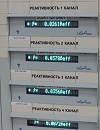 The first nuclear reaction has been recorded at unit 2 of Leningrad NPP-2
The first nuclear reaction has been recorded at unit 2 of Leningrad NPP-2
The final stage of the physical launch for the newest VVER-1200 2th power block has been launched at Leningrad NPP-2 (a part of the electric power division of ROSATOM). This is the first time the nuclear facility has reached the minimum controllable power.
This means that the neutron flux control equipment has recorded stable neutron capacity, and the first self- sustained controlled nuclear reaction has commenced in the reactor core.
The minimum controllable power is the lowest capacity level that enables us to conduct a number of tests and to verify the physical parameters of the reactor core to make sure it complies with the project requirements. Once these operations are completed and the...
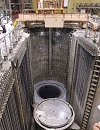 Fuel Loading Starts at Power Unit 2 of Leningrad NPP-2
Fuel Loading Starts at Power Unit 2 of Leningrad NPP-2
After fuel is loaded, the reactor will be brought to minimum controllable power level (up to 1%), to ensure safety of all relevant processes. The physical launch will be followed by the power start-up, trial operation, and integrated testing. The power unit is scheduled to be commissioned in 2021. It will replace the RBMK-1000 reactor-equipped power unit 2 of Leningrad NPP-1, which will be shut down at the end of this year after 45 years of service.
The VVER-1200 is the flagship of ROSATOM Generation III+ PWR-type reactor and the world's only Generation III+ design in serial construction. Unit No. 2 at the Leningrad-2 NPP is going to be the fourth in the series following units No. 1 and 2 at the Novovoronezh-2 NPP, launched in 2016 and 2019 respectively, and unit No. 1 at the Leningrad-2 NPP, launched in 2017.
Rostov NPP has obtained a license for the production of medical oxygen
Nuclear fuel has been delivered for initial loading to power unit 1 of Belarusian NPP
Smolensk-3 has obtained a license from Rostekhnadzor for extended lifespan
The works on reinforcing the bed plate of the first facility of the main cooling water system of the power unit No 1 - Unit Pump Station building - started at the construction site of Kursk NPP-2
Leningrad NPP-2: Rostekhnadzor gave permission for operation of the powerplant of the super powerful innovative power unit No 1 with VVER-1200 reactor
Leningrad NPP: the assembly of the turbine island main equipment has been completed at the construction site of the innovative power unit No 2
Leningrad NPP: in Russia Day the new super powerful unit with VVER-1200 reactor was put at 100% power for the first time
Rosatom will meet the requirements of Minsk and will replace the reactor vessel for the Belarusian NPP
Reactor vessel is lifted at Novovoronezh NPP-2 second unit
Start-up of new nuclear units of Vogtle NPP shifted by 18 months
The Rostov NPP: 3000 tons of pipes to be mounted on the power unit #4 under construction in 2015
Temelin NPP in 2014 - the third result in its history
Kudankulam-1 was put into commercial operation
Kursk NPP reached a new historical maximum of electricity generation
Fangjiashan-2 reaches first criticality
Work on Karachi-2/3 construction was resumed
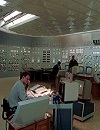 Rostov-3 is connected to the grid
Rostov-3 is connected to the grid
The third unit of Rostov NPP began to give the first kilowatt-hours in the unified power grid of the country.
Rivne-1 is disconnected from grid
Kudankulam-3/4 construction shall start on 2015-2016
Kursk NPP generates 800 billion kilowatt-hours
 Electricity generation in Pyhajoki starts in ten years time
Electricity generation in Pyhajoki starts in ten years time
I want to thank Parliament for the trust they have shown in this important project. The Hanhikivi 1 nuclear power plant will generate emission-free electricity for Fennovoima owners at a predictable and reasonable price for decades to come. This large-scale investment will create jobs and give a much-needed boost to the economy, Toni Hemminki, CEO of Fennovoima states.
Paks-2 life time was extended for 20 years
Balakovo-3 is shutdown for scheduled maintenance
Rostov NPP has successfully completed loading nuclear fuel into the unit 3
Fuel loading began on Rostov-3
Fangchenggang-1 achieved first criticality
Kozloduy-6 is online
Final inspection on Rostov-3
Balakovo-4 is online
Finnish Government Approves Rosatom Nuclear Reactor Project
Prime Minister: Finland to Continue Nuclear Cooperation With Russia Despite Sanctions
Russian Nuclear Experts Present Bushehr-2 NPP Project in Iran
Second Unit of India Kudankulam Power Plant Set to Open in November
Russia Plans First Nuclear Reactor Delivery to Belarus in 2015
Japan to Reopen First Nuclear Plant Since Fukushima Disaster
Russian-Designed Reactor at Indian Nuclear Plant Nears Capacity – Source
A starting agreement has been signed to launch production of steam generators for Tianwan Phase II
Representatives of the Turkish Atomic Energy Authority visited Novovoronezhskaya NPP-2
Bushehr Nuclear Plant Halts Work for 2 Months
Rosatom Boosts Foreign Orders Portfolio to $74 Bln
A delegation of the Peoples Republic of Bangladesh paid a working visit to the construction site of Belarus NPP
The celebration ceremony of the first concrete installation took place at Tianvan NPP unit 4
Rosatom to Be Key Contractor in Finnish NPP Project – Putin Aide
Russia Gives Iran Control of Bushehr Nuclear Plant
IAEA to Study Environmental Impact of Russian Power Plant in Baltic
Iran to Take Control of Bushehr Nuclear Plant on Sept. 24
Lithuania Urges Belarus Not to Build Nuclear Power Plant
Iran Leader Asks Putin for Go-Ahead to Build New Nuclear Plant
Rostov NPP: international experts paid a preliminary visit
Belarus NPP: the construction is ahead of schedule
Iran Hopes to Build Bushehr Unit 2 with Russia
Kalinin NPP: a visit of permanent representatives to international organizations in Vienna
Russia, China Launch Stage Two in Joint Nuclear Plant Project
Iran Faults Female Russian Staff at Nuclear Plant Over Hijabs
Moscow: Foreign NGOs Behind India NPP Protests
Turkey Goes Ahead with Power Plants on Bulgarian Border
Iran Refuels Nuclear Plant
Lithuanian PM: Nuclear Plant Cancellation Helps Russia
Russia, Bulgaria Discuss Belene NPP Project
Turkey: No Plans to Build Nuclear Plant on Bulgaria Border
Lithuanians Vote against Nuclear Power Project
Bulgarian Right Wing Queries Belene NPP Referendum
RWE Quits Bulgaria NPP Project over Lack of Funding
Bulgaria to Freeze Belene NPP Talks
Unit 4 of Kalinin NPP released for commercial operation
Iran to Get Full Control of Bushehr Nuclear Plant in Dec.
Nuclear Fuel to be Loaded in Kudankulam Power Plant
Baltic NPP: New sports grounds in Neman district – a gift from nuclear engineers
Bulgaria to Build New Nuclear Unit by 2022
Bushehr Nuclear Plant to Run at Full Capacity in August
Russia, Belarus Sign $10 Bln Nuclear Power Plant Deal
Kalinin NPP Holds Meeting of Chief Engineers of Russian Nuclear Power Plants
Russia, India Agree Additional Kudankulam NPP Financing
Baltic NPP: a meeting of heads of construction and organizations held
Japan Reactor to Go Back Online
Belarus, Russia to Sign Nuclear Plant Deal in July
Rostov NPP: a foreign delegation visited units under construction
Japan Restarts Two Nuclear Reactors
Russia, Belarus Initial Nuclear Power Plant Construction Deal
A construction control panel meeting was held on the site of Baltic NPP
Installation of the first reactor containment dome completed at Novovoronezh II
Bushehr to Begin Operations in 2012 - Rosatom
Repair of Rostov-1 prolonged
Bulgaria registered project company for Kozloduy-7
South Korea Starts Building Two New Reactors
Bushehr to Switch to Full Capacity from Late May
Kola NPP: unit 3 is disconnected from the network
Belarus Ready to Build Second Nuclear Plant
Russians Resume Work at Indian Nuclear Project
Russia Pitches Baltic Nuclear Plant to Europe
Lukashenko Urges Russia to Expedite Nuke Plant Construction
Iran Busher to enter full operation in March 2012 – agency
First unit of Kudankulam nuclear plant may be launched in next 2 weeks - Indian PM
Russian Press at a Glance, Tuesday, November 13, 2011
Russia launches fourth unit at Kalinin Nuclear Power Plant
PM Putin to attend launch of nuclear power unit
Russia to grant $8 bln loan to Vietnam to build first nuke plant
Russia may build more nuclear power plants in Iran
Protests over Indo-Russian nuclear plant suspended for elections
Belarus agrees to Russian building of nuclear station
Iran launches Bushehr nuclear power plant
Bushehr nuclear plant starts powering electrical grid
Bushehr nuclear plant reactors gather pace - Russian contractor
Iran Bushehr nuclear plant to go into full operation by yearend - Ahmadinejad
Atomstroyexport sues Bulgarian power firm for 58m euros
The reactor of Bushehr NPP has been brought to minimum controlled power
Japanese reactor to be shut down for unplanned check
Bushehr nuke plant being reloaded with fuel - Russian contractor
Russia, Bulgaria to sign EPC contract on Belene nuclear plant
Russia says will complete Bushehr project in near future
Atomenergoproekt will start engineering surveys on Akkuyu NPP site in March
Construction of Belarusian nuclear power plant to begin in September
Russia ready to finance Egypt first nuclear plant
Russia to start building Turkey first nuclear power plant in 2013 - ambassador
Iran completes fueling Bushehr nuclear reactor
Russia, Bulgaria sign memorandums on Belene nuclear plant
Iran installs reactor cap at Bushehr NPP
Russia submits final cost estimate on Belene nuke plant to Bulgaria
Bushehr to be connected to Iranian national grid in February 2011
Iran set to load fuel in Bushehr nuclear reactor
Russia, Venezuela sign deal on nuclear power plant construction
Bushehr nuclear plant to receive additional Russian staff
Atomstroyexport and JNPC have signed a contract for the preliminary design of the second stage of Tianwan NPP
South Korea and Turkey are negotiating the construction of nuclear power plants
West mind games will not stop nuclear plant - Iran
First fuel to be loaded into Iranian nuclear plant later this month
Russia to begin 2nd stage of Tianwan nuclear power plant construction next year
IAEA approves area for first Egyptian nuclear plant
 Russia to load nuclear fuel into Iran's Bushehr NPP
Russia to load nuclear fuel into Iran's Bushehr NPP
Russia is completing final preparations to load low-enriched uranium fuel into Iran's first civilian reactor at the Bushehr NPP later on Saturday.
If the operation goes smoothly, Bushehr will be qualified as an operational nuclear power plant. It is expected to start producing electricity late this year or early next.
A Russian delegation headed by Rosatom chief Sergei Kiriyenko will attend the launch ceremony. The Iranian delegation will be led by Ali Akbar Salehi, vice president and Director of the Atomic Energy Organization of Iran (AEOI).
Western powers suspect Iran of pursuing nuclear weapons under the guise of its nuclear program, a charge Tehran strongly denies, saying the program is aimed at the peaceful generation of civilian energy.
On June 9, 2010, the UN Security Council approved a fourth round of sanctions against Iran over its nuclear program, including tougher financial controls and an expanded arms embargo, as well as an asset ban on three dozen companies and a travel freeze on individuals.
Later, the United States and the European Union imposed extra sanctions against Iran.
Bushehr NPP promotes non-proliferation regime in Iran - Russian FM
Bangladeshi delegation to visit Russia NPPs
Belarus may refuse NPP construction deal with Russia - Lukashenko
Russian fuel supply to Iran fixes nuclear issue - France
Bushehr nuclear reactor to be loaded with fuel August 21 - Rosatom
IAEA experts to inspect site for new unit at Armenian NPP
Bushehr Plant efficiency tests finished
Iran Bushehr NPP to go into operation in September
Russia signs deal with Ukraine on finishing Khmelnytsky nuclear power plant
Russia invites Poland to participate in Baltic NPP construction
Contract on Turkey nuclear plant nearly ready - Russian deputy PM
Joint Russian-Turkish NPP construction deal to be sent to parliament in days - Turkish minister
Russia says Bushehr nuclear power plant to start work on schedule
Russia, Turkey agree terms of nuclear power plant construction
Russia to invest several billion dollars in Argentina's nuclear energy sector
Iran first NPP in Bushehr to be launched in August 2010
Sanctions no threat to Iranian nuclear plant launch - Russian MP
Iran starts final test for Bushehr nuclear plant
Russia may offer Ukraine $6 billion nuclear loan - Putin
 The tender leaves in the sky
The tender leaves in the sky
The Temelin tender promises to be the most fun of all tenders for the construction of nuclear facilities, announced in the world in recent years. Mysterious Chinese mandarins and fruity Arab sheikhs were changed in the organizer chair by the Czechs, and in each Czech has a small fraction of the Good Soldier Schweik. Briefly, it will not be bored.
Certainly one of the bidders was in hurry and the Prague publishing house Argo printed the fantastic story The music for Anvilans (Hudba pro Anvilany).
Plot the story fit into three lines. Russian soulless corporation Energaz added two units to the Temelin NPP and immediately blocked Uranium Pipe supply lines of fuel and spare parts. But this was not enough for wily Russian, and they sold the Earth to the strangers in exchange for new types of energy. Rather, they would sell if it were not Czech engineer, who halts the expansion together with the ghost of suspiciously British nationality.
To make a competitor Black Lord in the best-selling science fiction - this is perhaps a new word in the history of world competitions.
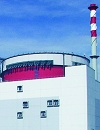 Temelin tender: Westinghouse went to restaurants
Temelin tender: Westinghouse went to restaurants
The cavalry is arrived on the Temelin tender in the Czech Republic. After the first round of bidding, three dozen companies are dropped out who have taken tender documents just to read. As predicted, in the second round only three left - the Czech-Russian consortium with the project MIR, AREVA and the alliance Westinghouse and Westinghouse.
Doubling of words in the preceding paragraph - not an corrector error. The American company Westinghouse came to tender along with his Czech daughter. A simple in its genius move will allow the Americans to ensure that, where appropriate, the localization level would be equal to 100%. The subcontractors nationality is less concern for the Czechs than that of the general contractors. Nevertheless, from 30 to 40 Czech companies have already fallen to the list of future performers in the event of victory of the Americans.
AREVA Group waiting for change. In Paris, a report is about to be prepared by the Roussely commission with considerations on how to reorganize the French nuclear industry.
Venezuela, Russia agree plans for nuclear power plant project - Chavez
Money row holds up Belarus's first nuclear power plant
Russia, China to build two new reactors at Tianwan nuclear power plant
A third nuclear power plant in the Czech Republic may appear in Blagutovitse in 2035 - the head of CEZ
Bulgaria reports reactor emergency shutdown
Bushehr nuclear plant to be launched this summer - Putin
India could offer new NPP construction site to Russia
Russia reiterates interest in building Egyptian nuclear plant
Iran's Bushehr NPP to be launched this year - Lavrov
Israel intends to build new nuclear reactor
Russia Starts Work On Baltic Nuclear Plant
Russia to spend $1.7 billion on nuclear power plant projects - Putin
Russian delegation to discuss Turkey nuclear power plant plan
Bulgaria seeks Russian loan to fund nuclear plant construction
Russia close to finishing reactor at Indian nuclear power plant
Russian energy minister says all done to complete Bushehr NPP
Iran says Russia honors NPP construction contract
 Russia close to completing Iran nuclear plant
Russia close to completing Iran nuclear plant
Russia is close to finishing the construction of Iran's first nuclear power plant and is currently making final adjustments, Foreign Ministry spokesman Andrei Nesterenko said on Tuesday.
Russian Energy Minister Sergei Shmatko said on Monday that the launch of the Bushehr nuclear plant in southern Iran may not take place before the end of this year, as earlier planned.
We are fully committed to completing this project. Russia has already supplied fuel for the reactor that has been built, and currently start-up and adjustment work is underway. Close attention is being paid to ensuring the safety of the reactor's work, Nesterenko said.
Upon completion of all necessary operations and tests, the reactor will be launched within the timeframe agreed with the Iranian side, he said.
Nesterenko said that Russian and Iranian specialists have yet to resolve certain technical problems.
He stressed that Russia's work on the project is not affected by the international controversy over Iran's nuclear program.
Russia delays launch of Iranian nuclear power plant
Atomstroyexport JSC became an official member of the Czech Nuclear Forum
Qualification documents for the project of completion of Temelin NPP, 3&4, are submitted to the Czech Customer CEZ
The stage of start-up and adjustment works at Bushehr NPP is in progress
Atomstroyexport has signed a development of documentation contract with the AREVA NP company
 Georgy Toshinsky: lead - bismuth is ready for demonstration
Georgy Toshinsky: lead - bismuth is ready for demonstration
First of all it is important to stress that lead-bismuth technology was initially created and applied at the Soviet naval reactors - it is the project 705 (or the Alfa seria).
At first we didn't have necessary knowledge and experience. Naturally we faced a series of difficulties and failures at that stage. They were overcome thanks to the persistent work of a lot of organizations, first of all IPPE and OKB Gidropress. At serial submarines reactors were working successfully, though, certainly, experience of work with the naval reactors was not so huge as that of the NPPs operation.
At the same time Rosatom scientific-technical counsel has recognized this technology as prepared for the demonstration and included into the federal program for its realization at the pilot unit with SVBR-100 reactor.
The main advantage of this technology is modularity, that allows creating of power generating units of different capacity divisible by 100 MWe (el.) on the base of a uniformed reactor module that is implemented on the machine-building plant and completely finished is delivered by railway or other transport to the NPP site.
 The two lives of the second nuke
The two lives of the second nuke
The second Bulgarian nuclear power plant will have two lives. The first one was a socialist one, and the second - capitalistic. Initially, it was erected to the glory of the everlasting friendship among peoples from the Eastern bloc, and now it is going to be completed for the sake of global energy safety. The first life was cut short with the start of political changes. Could it resurrect at the second attempt?
The first life of the Belene NPP (The Second Nuke) began in 1984. The USSR and Bulgaria signed an agreement on constructing a nuclear power plant on the bank of the Danube River. In case it was done, the energy system of the Balkan republic could have another 2,000 megawatts for starters.
The site was located right across the biggest Danubian island, Belene and just 7.5 km away from the border with Romania. Though the reactors, offered to the Bulgarians, were designed in the USSR, it was the Czechs, and to be more precise, Skodaexport, who contracted the production and assembly of the major equipment. Soviet experts handed all the technological documents and know-how over to the Czechs.
 Dmitry Ermakov: First unit is working and that is the principal fact
Dmitry Ermakov: First unit is working and that is the principal fact
Do you mean the tender Finnland-5?
No, it was before the Finnish tender. In 1991 we have begun elaborating new project on the base of 320 series reactor - with the participation of Finnish specialists on the first stage. Atomenergoproyect from St. Petersburg was a chief designing organization, and OKB Gidropress - chief constructor of the facility.
This project was made for the conditions of Finland. Later the country refused temporary from its plans on political reasons, but the concept of the design remained. After signing of the intergovernmental treaty with China about the building of NPP, two alternatives were offered to the Chinese part - NPP-92, where Moscow Atomenergoproyect was a chief designer, and NPP-91.
Chinese examined both alternatives and after long debates adopted the last one. What was there motivation? Probably the reason is that NPP-91 was more evolutional and was closer to the serial 320 project.
Nevertheless, what was the main difference of NPP-91 from VVER-1000/320?
 Vladimir Asmolov made us clear the future of the nuclear energy in Russia in the opinion of the Rosenergoatom corporation
Vladimir Asmolov made us clear the future of the nuclear energy in Russia in the opinion of the Rosenergoatom corporation
Russia may return to the elaboration of the design of VVER-1500 reactor. It became obvious after the speech of scientific-technical policy director of a Rosenergoatom corporation Vladimir Asmolov in Moscow at the International Scientific Technological Conference - 2008 Safety, effectiveness and economy of the nuclear energy.
We have reserve of researches, which we had been realizing from 2001 to 2004… This program (VVER-1500) is frozen today. I think, that when the unit of this type will be demanded, those approaches, that have been realized and are being realized by NPP-2006designing and constructing, will be applied at a so-called serial NPP-2006 unit of an increased capacity, - stated Asmolov.
Rosenergoatom representative was rather skeptical about the future of low-capacity facilities: We think that facilities under 20 MWe capacity - very low-capacity facilities or local facilities - can't be economically justified.
Opinion that safety demands there (in the small energy sector) are not so tough is false. Closeness to the consumers only toughens the safety demands - said Asmolov.
 Nicolay Sorokin about operation experience of Rosatom's NPPs in 2007
Nicolay Sorokin about operation experience of Rosatom's NPPs in 2007
A series of works for increasing neutron-physic characteristics was implemented at nuclear power plants with RBMK reactors of Rosenergoatom company - declared a technical director of the company Nicolay Sorokin in his speech in Moscow at the International Scientific-Technical Conference - 2008 Safety, effectiveness and economy of nuclear energy.
These works give us a chance to revise earlier limitations maintaining all the current safety standarts, said Sorokin.
The nuclear operative also noted that in 2007 works for increasing fuel effectiveness were continued. New types of fuel with increased stability and burnout coefficient have been introduced - commented Sorokin on the activities undertaken at VVER reactors.
Fuel for RMBK reactors is also being modernized, though there are no plans of building new channel-type reactors - stated Sorokin. He also stressed, that at all RMBK units uranium-erbium fuel with 2% enrichment is used now.
BN-350 reactor facility. Collected experience. Part 4.
Radiation safety completely totally corresponded safety regulations.
Radiation environment at BN-350 reactor facility was examined as higher capacity levels were mastered, and was controlled further during the operation. Research program included definition of radiation flows at the reactor junctions, coolant and shielding gas activity measurings. Matching of measurements and calculations was satisfactory.
In the rooms of the first circuit radiation environment at operating reactor was defined by 24Na (about 10 Cu/l). After reactor was stopped main role were playing 22Na isotopes, nuclides of corrosive origin, 137Cs and 134Cs, getting out through the fuel elements leakages. Radiation load over the personnel was insignificant and didn't exceed control levels.
Speaking about radiation environment near the facility location, it was safe during all the lifetime of the reactor and was defined by the radionuclides of the natural origin. Radioactivity emissions were only some percent from acceptable.
 Anatoly Petrov: we are ready to help
Anatoly Petrov: we are ready to help
RBMK has gone through many changes during its 35 years history. Fuel enrichment was increased from 1.8% to 2% (235U) to increase the burnup. Then, after Chernobyl incident, uranium enrichment was increased to 2.4% in order to reduce the steam radioactivity effect. This way within the active zone was remaining a big amount of so-called supplementary absorbers (SA) that reducing αφ worsened economic characteristics of power units because of the supplementary neutron capture.
Fuel with the addition of burning out erbium absorber was worked out some years ago for RBMK. In 1996 loading of this fuel of 2.6% enrichment started and from 2001 enrichment was increased to 2.8%. As the old fuel was replaced by uranium-erbium one, systematic SA unloading and αφ reducing began, and a burnup fraction of the unloaded fuel increased. At the expense of uranium-erbium fuel this characteristics increased today from 20.9 to 25.8 Mwe×day/kgU. Burnup will be increasing further as the reactors will be loaded with uranium-erbium fuel.
 Yuriy Baranaev: we still have the future
Yuriy Baranaev: we still have the future
Frankly speaking we were not particularly enthusiastic about the refusal of the idea of creating Volnolom-3 floating NPP: we have had rather convincible arguments. In due time IPPE was managing elaboration of a state program on a large-scale ASMM introduction in remote isolated regions. This work was led directly by now late Yuriy Anatolievich Sergeev, Honored power engineer of Russia, who had started his career from the post of a deputy scientific manager of TES-3 project.
He initiated analytical researches of low-capacity nuclear generating units market, was an organizer and a participant of several expeditions to the remote Northern and North-Eastern regions. There was elaborated a program specifying about 100 locations for the possible small NPPs stationing. Later on this amount was reduced to 30 and this program was endorsed by Gosplan of USSR in sixties. Several NPPs with different reactor facilities, including ABV were mentioned there.
As a result it was found out, that for the large-scale ASMM introduction it was necessary to promote low-capacity facilities.
BN-350 reactor facility. Collected experience. Part 3.
By the designing of the control units and SG protection system a serious consideration was given to the detecting and localization of large leaks. Incidentally, designed systems coped with this task perfectly. But authoring control systems were very inertial to detect leaks timely.
In 1973 and 1974 BN-350 had eight leaks, including two large ones. Practically all of them appeared on the lower edge of the weld, which connected stamped bottom of the Fild pipe with the pipe itself. The result of the incidents was a withdrawal of the SG with the loop for repair, that demanded limitation of the facility capacity.
Repair, which is carried out by the defective pipes opacification, was not successful. By next SG launches leaks in the other pipes were appearing.
We managed to cope with this problem after the complete overhaul of the 5 SGs with the total replacement of the evaporator matrixes in 1974-1975. Fild pipes 32×2 mm with the stamped bottoms were replaced by the 33×3 mm pipes with the chiseled bottoms. Though we haven't managed to exclude leaks, but we have reduced their amount significantly.
Third HLMC-2008 conference will be held in Obninsk
 Margarita Mashina: personnel for the industry should be brought up from the 6th form
Margarita Mashina: personnel for the industry should be brought up from the 6th form
Certainly, in the nineties it was a difficult task. Usual promotion, which existed earlier in the industry and was connected with the launch of new generating units in the country and abroad, disappeared. As a result we had been observing stagnant processes during the decades, which had a negative impact on our people.
A person can develop if his activity stimulates him and gives him new tasks. But if his work becomes monotonous and routine a person has to search for another implementation of his capacities. If a person realizes his potential, he comes to the strong personality crisis, and, at the end of the day, to the personality death. In the nineties there were a lot of people in a depressive state and in a hopeless situation. We tried to promote this people somehow - were recommending them for the further education, for mastering parallel professions, administrative ones. But sometimes we failed to do so.
Today we witness a nuclear renaissance. Industry gives us a new task - to form an echeloned human resources reserve. It should be a lot of such reserves.
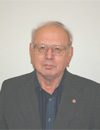 BN-350 reactor facility. Collected experience. Part 2.
BN-350 reactor facility. Collected experience. Part 2.
The topic of fast neutron reactors is of the top priority for our edition. We offer our readers to come back to the backgrounds of our nuclear fast neutron reactors program - the fast neutron reactor BN-350.
By the reactor facility BN-350 designing in the early sixties, the principle of maximum usage of natural physical processes was stated and sequentially realized. It had significantly simplified the facility, increased a reliability of exploitation and security, reduced the necessity of technological parameters automatic regulation and excluded the necessity of interfering of the personnel by the transitional processes and by various incidents.
It should be noted, that Russian fast sodium reactors appeared to be almost the first reactor facilities, which had been widely using natural physical processes. On the reactors of the other types the idea of using this principle was implemented only after serious incidents on NPPs (TMI-2 and Chernobyl).
Let us have a look at two examples of using natural processes in BN-350 project.
 BN-350 reactor facility. Collected experience. Part 1.
BN-350 reactor facility. Collected experience. Part 1.
First of all, Russian specialists planned to prove or to correct scientific and technique conceptions of fast neutron reactors while constructing and exploiting BN-350. It was rather important to specify BN peculiarities and processes, flowing both by normal operation and by abnormalities and incidents.
It was required to prove or to disprove the principal decisions on equipment constructions, on technological systems designing and on security principals. It was planned to examine reasonability and necessity of making changes in structural and circuit designs of fast neutron reactors, and to optimize them for the future facilities.
Undoubtedly, one of the main tasks of BN-350 was to achieve a practical experience of bringing into service of fast rector with sodium coolant. Domestic specialists had to learn operating conditions managing, to realize the rightness of foreseen precautions (or to detect an excess of this precautions), and finally, to optimize the behavior of personnel in different situations.
Russian government approved a General plan of power industry objects placement till 2020
 Victor Severianinov: confession of an operative
Victor Severianinov: confession of an operative
I am a Muscovite, I joined the Moscow Engineering Physics Institute after the front and graduated from this university in 1954. Two years before that, I had visited Obninsk to undergo practical trainings as a forth-year student. I had been in the Laboratory B for a month. Finally, I and my fellow students - the whole group, about ten students - were sent to Obninsk.
We didn't object to such a turn in our destinies, and at that time it was impossible to object. Frankly speaking, we all were really very glad. Our teachers on the question about the place of our future work usually were giving the following answer: Not closer than Urals and not further than Baikal. And we found ourselves on the object that was only 100 km from Moscow. Of course we were glad, frankly speaking.
Everything happened this way. We have been given a room, Ninel arrived (Ninel Andreevna - Victor Sergeevich's wife). I turned over my duties of an engineer-physicist to my wife and began working at the reactor control desk.
 Lev Kochetkov: from mercury to sodium, from BR-1 to BN-600
Lev Kochetkov: from mercury to sodium, from BR-1 to BN-600
Don't you know that sodium was not the first candidate for the role of a coolant for fast reactors? There were other candidates that seemed to be more promising than sodium.
In our country IPPE has made the most significant contribution to the development of fast reactors, certainly, by the great support from other domestic organizations. But fast reactors research has been started in the USA. Most important priority at first was to find the method of plutonium enrichment for military purpose.
First we had to guess, that fast neutron spectrum is capable of improving reproduction characteristics! A crucial role must have played Enrico Fermi.
Generally speaking, history of nuclear energy has examples of genius inspirations. I always remember the words of our compatriot academician V.I.Vernadsky, pronounced in 1922 about the prospects of nuclear energy. How could he at that time foresee the appearance of NPPs - it is mind-boggling, as all main discoveries that paved the way for using nuclear energy have been made later.
BN-800 fast breeder project moves forward
Serguey Shmatko may leave Atomstroyexport
Kukshinovskaya site would be the place of first Byelorussian NPP construction
Frozen opening
Nuclear renaissance requires sacrifices. But if in far African Niger real blood runs in the struggle for uranium, in India more close to us only the fate of Cabinet of Ministers has been sacrificed at the altar of peaceful atom. Junior partners of Indian government from left parties have blocked a passage of so-called nuclear deal between India and USA, having recourse to threat of ahead-of schedule election.
Indian press harried to name negative reaction of Russia on this event. The largest newspapers of Asian democracy note that Sergey Lavrov demonstratively refused to meet with its Indian colleague arrived to Moscow with official visit. The complaint of the Russians is that Russia expected to conclude several profitable contracts for construction of NPPs in India - of course, only in the case, if India-USA nuclear deal is going its way.
Ecological problems of nuclear industry and the situation in China
Energy is a basis of life. All civilization comforts, all material spheres of man activities - from laundering till investigations of the Moon and Mars require power consumption, which will only increase in future. Today energy of atom is widely used in many branches of economics.
Powerful submarine and surface ships with nuclear power installations are under construction. The peaceful atom is used in prospecting for minerals. Radioactive isotopes have a wide application in biology, agriculture, medicine, in space exploration.
Nuclear power plants are the third whale in the modern world power system. Equipment of NPP undoubtedly is the great achievement of the scientific-technical progress. In the case of trouble-free operation, NPPs practically don't pollute the environment, besides thermal pollution. Actually radiation waste presenting a potential hazard is produced as a result of NPP (and nuclear fuel cycle enterprises) operation.
Venezuela set to launch peaceful nuclear program
Russia to complete NPP in China, build gas centrifuge plant
Egypt to build several nuclear power plants
Belarus to hold tender in 2008 to build nuclear power plant
Nuclear power plant construction a priority for Russia - Ivanov
 Peter Bezukladnikov: Group E4 will become one of the main players
Peter Bezukladnikov: Group E4 will become one of the main players
Company Group E4 was established at the beginning of 2006, as a result of integration of seven leading Russian engineering, service and construction organizations. At present Group E4 includes 13 holding enterprises with more than 50 production assets. Three enterprises have large experience of work at nuclear power facilities: Polzunov Central Boiler-and-Turbine Institute Research-and-Production Association (OJSC NPO TsKTI), OJSC Scientific-Research and Design Institute Energoproject (KIEP) and NPO Centroenergomontazh. Each enterprise made the unique contribution to development of USSR's nuclear complex.
Centroenergomontazh's specialists took part in erection of the world's first NPP in Obninsk in 1950. Five of ten Centroenergomontazh's erection managements are located at three NPPs (Kursk NPP, Smolensk NPP, Novovoronezh NPP).
Atomstroyexport completed Tianwan NPP first stage construction
 Corrosion of Alloy 600 - comment of our reader
Corrosion of Alloy 600 - comment of our reader
Corrosion of elements of Alloy 600 is known among Western nuclear specialists long ago, at least much earlier than incident at Davis-Besse NPP. The report of NRC issued in 2005 (NUREG-1823) states that the first similar incident was registered at the third unit of San Onofre NPP with PWR-1000 reactor in California. Here I&C nozzle at pressurizer is subject to corrosion. In 1987 nozzles of the same pressurizer leaked at unit with PWR reactor in Arkansas. In 1989 there was the first information of PWSCC corrosion at French units. Two years after the first incidents of corrosion damages of control rod nozzles on reactor vessel heads of Western pressurized water reactors were detected. Nowadays leakages of measuring detectors in reactor bottom and appearance of cracks in butt weld are observed. Firstly this problem arose in 1971 with leakages in steam generators. All these and other incidents are well documented and collected in the report NUREG-1823 above-mentioned or in another known document MRP-111 (Materials Reliability Program Resistance to Primary Water Stress Corrosion Cracking of Alloys 690, 52, and 152 in Pressurized Water Reactors).
Davis-Besse NPP - Mistake in DNA
After incident at Davis- Besse NPP, material 1600MA was removed urgently from the AP-1000 reactor project. American designers actually admitted by this fact - there was an internal critical mistake in PWR reactor technology. In other words - a mistake in reactor DNA. Here comparison with DNA is not accidental. Following USA, 1600 MA was implemented practically in all PWR projects - similar reactors in the world, except Russia. If unreliable material can be replaced in new light water reactors, unexpected catastrophe at operating NPPs can be prevented only by organizational measures such as careful and repeated inspections. About seriousness of mistake one can judge on panic behavior of AP-1000 designers. A replacement of 1600MA material is suggested in all elements of new unit of almost the third generation. First of all it proves that the designer is not sure in reliability of own project.
Nuclear source says Bushehr NPP to be completed in fall 2008
New Armenian nuclear power plant to cost $2 billion
Neither deadline for talks, nor commissioning table for Iran NPP
Mottaki: Iran, Russia in talks on Bushehr nuclear power plant
Tianwan NPP Unit 2Generated Billion kWh Electricity
 Vladimir Stepanov: Lead-Bismuth Will Work for Civil Needs
Vladimir Stepanov: Lead-Bismuth Will Work for Civil Needs
SVBR-75/100 reactor was born as conversion project from submarine reactor technology cooled by lead-bismuth coolant. Alexander Leipunsky initiated the work on development of this reactor in 50-ies of the last century. When actuality of using this direction in the navy was canceled, we had to find new usages for lead-bismuth. Naturally, we paid attention to civil nuclear power. Together with Boris Gromov, was being the research leader of this direction, we contacted with Rosenergoatom, in particular, with director general Eugene Ignatenko, we first conceived the idea to try to prolong lifetime of the first generation units with VVER-rectors by means of lead-bismuth technology. This moment is the start of SVBR lead-bismuth fast reactor development for civil nuclear power.
The second power unit of TAES commissioned for commercial operation
On August 16, 2007 at 00:15 by Beijing time the Jiangsu Nuclear Power Corporation (JNPC) commissioned Unit 2 of TNPP for commercial operation having completed respective tests of its operation under rated mode, stipulated by the power startup schedule. Signing of the protocol of Preliminary Acceptance of Unit 2 between ASE and JNPC is expected in the middle of September. As of today, the first Unit of TNPP has been in commercial operation since June 2007, operating with stability at 100 % capacity. It has generated about five billion kW-h since its startup. Unit 2 of TNPP has generated more than 700 mln kW-h by the moment of its commercial operation startup.
EU to fork out $27 million on Russia nuclear safety - NPP operator
The European Commission plans to allocate 20 million euros (over $27 million) for nuclear safety projects with Russia, the country's nuclear power plant operator said Thursday. Rosenergoatom, which runs all 10 Russian NPPs with a total capacity of over 23 GW, said the funds offered by the European Union's executive branch aimed at optimizing their preventive maintenance. The funds will be allocated under The Instrument of Nuclear Safety Cooperation (INSC) program, intended for seven years. A source in the company said Rosenergoatom is supposed to prepare bidding documents no later than December. The INSC has a budget of 450 million euros ($620 million), about one-third of which will be earmarked for joint nuclear safety projects with Russia.
Russia to commission second unit of China's Tianwan NPP in September
Russia's nuclear equipment export monopoly Atomstroyexport confirmed Tuesday it will commission the second unit of China's Tianwan nuclear power plant in September. The company is building the Tianwan NPP in eastern China's port city of Lianyungang under a 1992 agreement. The plant features improved VVER-1000 reactors and K-100-6/3000 turbo generators. Atomstroyexport will start commissioning the second unit following additional dynamic tests, the company said in a statement. We are expecting to commission the unit and start its commercial operation as early as September 2007, the statement said.
Smolensk NPP generated 10 billion kWh electricity since the beginning of the year
Belorussian nuclear poker
Armenian NPP specialists visited Volgodonsk NPP
Atomstroyexport: Busher NPP will be launched in autumn 2008
The best innovation solutions of NPP-2006 Fair included in the project of a new NPP
Meeting of the deputy chief engineers at Kursk NPP
IAEA will inspect Rostechnadzor activity
New sarcophagus for Chernobyl NPP
Turbogenerator of the 3rd unit of Smolensk NPP was connected to the grid
The 1st unit of Kursk NPP was connected to the grid
New appointments in Atomenergoprom and Rosenergoatom
Meeting of the Russia chief engineers
Rosenergoatom - EDF exchange of experience
Idea of NPP construction in Perm region is gaining ground
Declaration of intentions to invest construction of Leningrad NPP-2 units was approved
Successful tests of equipment at Kola NPP
Construction of the 2nd unit of Volgodonsk NPP will be accelerated
Balakovo NPP launches half year-repair work
Izhorsk plants have completed the 37th shipment for Kudankulam NPP
Belorussia discusses a foundation of independent regulating body for nuclear safety supervision
Vladimir Putin has signed the Law on the Ratification of agreements for ITER
Volgodonsk NPP sent to Russian budget RUB 1 billion 748 million
Experts are discussing construction of a new NPP in Armenia
Turbogenerator of the 2nd unit of Kursk NPP was shut down
Silovye Mashiny will increase the volume of orders up to USA$ 2 billion
False function of fire-protection system at Kalinin NPP
Ukraine and Russia held meeting on complex study of Chernobyl NPP units
Bilibino NPP: two-year operation without violations
Training department of Kola NPP successfully passed certification
Russian expert: Reliability of Russian NPPs were checked in Spitak
Quake hits Japanese nuclear plant: a Russian view
I saw a burning transformer on the television. It was no shock to a specialist-a tank transformer can catch fire with the slightest spark. Every project envisages safety measures. Transformers are set apart from each other, so fire cannot spread to cause a leak. Radioactive water could have leaked from the reactor containment sump-but I don't think it could get out of the circuit and pollute the environment, whatever the press might be saying. As for polluted sea, I think that's a paranoid allegation.
The expert dismisses speculation that seismic danger was underestimated when the plant site was chosen: The Japanese are top-notch professionals, and exacting and pragmatic to the utmost degree in choosing plant sites. It was a mere accident, I think.
STUK specialists visited Kola NPP
The 5th unit of Novovoronezh NPP shut down as scheduled
Moscow state university and Rosenergoatom department for management of investment programs have agreed about foundation of the strategic partnership
Silovie mashiny will provide orders for Ukraine enterprises
Atomenergomash contradicted the statement of Nucon-RF about foundation of joint venture for manufacturing equipment for NPP
IAEA experts visited Kursk NPP within cooperation program
Tianwan nuclear plant's 2nd unit reaches full capacity
The No. 2 generating unit of Tianwan nuclear power plant, a Sino-Russian cooperative project, has begun to operate at full capacity, according to an announcement by the China National Nuclear Corporation (CNNC). CNNC said that the second unit is operating at a stable 1.05 million kw and all technical parameters are within set values. Before its test operation, the unit passed a full-capacity safety check by the National Nuclear Safety Administration. After the debugging period, the no. 2 generating unit will officially start commercial operation.
Beloyarsk NPP resumed its operation at full power
The 2nd unit of Taiwan NPP reached full capacity
OKBM received the government order for new fast reactor for Beloyarsk NPP
Khristenko: Russia and Chine cooperation shouldn't restricted by Tianwan NPP
Kazakhstan President Nursultan Nazarbaev announced the plans to construct NPP on the west of country
Kirienko: Today more 50% electricity is generated by gas fired plants. It's a barbarism
Kirienko will head Atomenergoprom
BN-800 reactor will be constructed in 2012
Tender on choosing the general contractor for building of the 1st unit Leningrad NPP-2 will be announced in the first quarter of 2008
Kalinin NPP: The general contractor was defined for construction of the 4th unit
The 1st unit of Kursk NPP disconnected from the grid
Russian people magnify danger of radiation accidents tens thousand times
Baltic plant will manufacture the equipment for Beloyarsk NPP
Kalinin NPP first realized a project of underground deposit for industrial waste
Competitors spread rumors about accidents at NPP
Rostechnadzor head: 143 violations of nuclear rules at Russian NPP were revealed in 2007
Turbogenerator was shut down at Kursk NPP again
Rosatom deputy head Vladimir Travin will chair Atomenergoprom
The peaceful atom appears in internet
Russia actively buys Ukrainian nuclear power engineering enterprises
The 3rd unit of Leningrad NPP will be shut down for half year in connection with capital repair
Russia needs in foreign technologies for realization its nuclear program
Rosenergoatom and open joint-stock company Silovye Mashiny (Power machines) discussed delivery of equipment to NPP
JSC MSZ passed quality audit carried out by finish companies Fortum and STUK
Working meeting on NPP safety issues was held in Moscow
Azerbaijan can build NPP
Atomenergomash and Alstom will form joint venture for manufacture of turbines for NPP
Federal target program for development of the 2nd unit of Rostov NPP: chronicle of construction
The Kursk NPP Unit No 2 connected to the grid
Khristenko: Overall general scheme of RF electric power will be ready in September
5th unit of the Kursk NPP will require investments of RUB 45-47 billion
Poll shows: Georgia is opposed to NPP construction
Russia is interested in construction of NPP in Belorussia
EuroSibEnergo plans to construct NPP and sell electricity
Second Rosatom's Industrial Innovation Forum launched in Moscow
Two turbo-generators of the second unit were shut down at the Kursk NPP
Russia hopes to sign Belene NPP contract this year - President Putin
New NPP project launched in western Russia
Estonian scientists propose underwater nuclear reactor project
Lavrov: Moscow to fulfill commitment on Bushehr power plant
Russia to commission 2nd unit of Tianwan NPP in September
Georgia mulls nuclear reactor construction with French help
Bulgaria reporting progress in quest for energy security
Russia to set up radioactive materials control body
Some 20 countries interested in floating NPPs - Russian nuclear official
Russia, China sign commissioning act on 1st unit of Tianwan NPP-1
Demand for JSC Atomstroyexport bonds three times exceeds the offer
On May 29, 2007 JSC Atomstroyexport its ASE-Finance debut bonds worth RUB 1 500 000 000. The bond issue of a company operating in high-end nuclear technologies market and constructing nuclear power facilities abroad has spurred investors' interest. The bonds placement was arranged as an auction that involved over 30 investment companies and Russian banks including such large ones as VTB, NOMOS, TRUST, MBRD, Hanty-Mansiisk bank, Promstroybank as well as Troika-Dialog, Capital, RTK Broker and other investment companies. In the course of the placement, investors submitted 81 applications for RUB 4 486 000 000, thus three times exceeding the original offer.
Iran complies with Bushehr NPP construction terms - official
Stabilization activities at ChNPP Shelter Object successfully completed
JSC Atomstroyexport and JSC Stroytransgas formed a strategic alliance
Russian nuclear concern to be incorporated as JSC by December
Kazakhstan to allocate $1.25 million for NPP feasibility study
Daily roundup from Russia - May 08, 2007
Atomenergoprom could be established in May-June 2007
Russia to shift energy focus on nuclear power - Ivanov
The Russian government will review its energy strategy in April to increase the share of nuclear power, hydroelectric and coal industries in power generation, the first deputy prime minister said Friday. Russia is likely to experience an energy deficit in the future if it continues to rely on thermal power generation mainly based on non-renewable reserves of natural gas. The nuclear power industry must become a solid foundation for power generation in Russia if we want to reduce our dependence on natural gas, said Sergei Ivanov, addressing the collegiate of the Federal Nuclear Power Agency (Rosatom).
UN nuclear agency backs Lithuania's NPP plans
Russia ready to expand ties with Chile, build nuclear plants
Daily roundup from Russia - February 24
Daily roundup from Russia - February 21
Daily roundup from Russia - February 19
Kaiga atomic plant to go critical by month end
SUEZ denies having made a decision to build a power plant in Tricastin
Daily roundup from Russia - February 15
Daily roundup from Russia - February 14
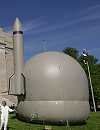 AREVA group - end of beginning or beginning of end?
AREVA group - end of beginning or beginning of end?
However many French researchers specialized in nuclear field do not want to accept the perfunctory explanations and prefer to find the real reasons of AREVA failures. Not so long time ago - in 70th-80th - the French nuclear industry had the unique experience of ambitious nuclear program realization, up to 12 new reactors per year. But the gas pause affects in quite complete collapse of nuclear monopoly. The reactor industry of France was turned to the foreign markets and sequestered. The last French reactor unit was commissioned in 1999.
 The splendors and miseries of AREVA
The splendors and miseries of AREVA
Ceteris paribus, the 5:1 final score could be easily transformed into 6:0. The hypothetical advantages of the paper tiger - EPR-1660 reactor being existed on the paper only - have been completely graded by the reality of the Russian VVER-1000 existence. At that time, the technical problems in Bushehr and Tianwan have not been floated to the surface, and the Muscovites were busy preparing the forthcoming start-up of one Iranian and tow Chinese reactors. In Finnish bid, the Atomstroyexport has needed the next to nothing - just wisdom of its leadership and a little bit of governmental support. Anyway, the Russians lost, the French won.
Daily roundup from Russia - February 13
Russia pins energy hopes on new nuclear monopoly
President Vladimir Putin recently signed the so-called tunnel law, which is opening new vistas for Russia's civilian nuclear power industry. Its official title is as follows: The Law on the Peculiarities of Managing the Property and Shares of Organizations Using Nuclear Energy and on Relevant Changes in Some Legislative Acts. The document had previously been approved by the Duma. The law is designed to rationalize the legal and institutional conditions for the operation of the energy-and-industry sector, and make it more competitive internationally and more attractive for investment. It separates the Russian nuclear power sector into military and civilian parts.
Belarus to start building its first nuclear power plant in 2008
Belarus plans to start building its first nuclear power plant in 2008. Belarus's National Academy of Sciences said Monday the NPP's first unit will be commissioned in 2013-2014, and the second unit by 2015. Their total power will be 1,000 megawatts. Another two units will be built by 2025. Earlier, a deputy chairman of the academy presidium, Vladimir Timoshpolsky, said Russia and France are the likeliest partners of Belarus in the project.
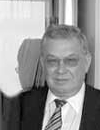 Victor Murogov: nuclear renaissance - perspectives and threats for Russia
Victor Murogov: nuclear renaissance - perspectives and threats for Russia
Professor Victor Murogov - IAEA Deputy Director General in 1996-2003, Obninsk Institute of Physics and Power Engineering (IPPE) director in 1992-1995. First director of INPRO program - international project on innovative nuclear reactors and fuel cycle. In a recent interview to AtomInfo.Ru, professor Murogov spoke of the nuclear renaissance, international markets and Russian nuclear perspectives abroad. Below there are the excerpts from the interview.
ASE wins tender for Belene NPP construction in Bulgaria
5th International Scientific and Technical Conference Safety Assurance of NPP with WWER which will be held on 29 May - 1 June, 2007 at FSUE EDO GIDROPRESS, Podolsk, Moscow Region, Russia
Gref: outlook for Indo-Russian trade and economic cooperation
What units is Russia going to build on new Indian sites? These will be VVER-1000 reactors (a 1,000 MW water-cooled reactor), which use the most up to date technology in the nuclear industry. As many as 52 such units are already operating successfully, 14 of them in Russia. Their service life is over 1,000 reactor-years. According to independent experts and the IAEA, the Russian VVER-1000 is one of the most reliable reactors in the world. Its safety is comparable to NPPs in Europe, the Unites States and Japan. At the same time, the price to quality ratio makes the Russian reactors superior to their foreign analogues.
Russia set to launch first unit of NPP in India in 2008
FORTUM: Over 30 years of nuclear power at Fortum's Loviisa power plant
Kaiga 3rd reactor unit nearing completion
Mochovce could have five reactors in future, minister says
AREVA signed an agreement with China Guangdong Nuclear Power Group Co Ltd to built two nuclear reactors
Work continues at the OL3 construction site
Pebble-bed reactor appeal turned down
BHEL plans JV with Alstom for nuke project
Highlights of the Olkiluoto-3 review by STUK
The new nuclear power plant project in Finland has been plagued by safety problems and delays. There have been problems e.g. in manufacturing the steel liner that is essential in protecting the core from external threats and containing dangerous substances in case of an accident as well as the concrete base slab that should support and protect the structure. This is a brief compilation of the findings of a report by the Finnish public nuclear safety authority published July 2006.
Namibia opts for nuclear power
To Beat Weapon-Grade Plutonium Into Something?
In July 2000, the quantitative aspects of the agreement have been elaborated. It has been fixed at presidential level that the Russian Federation and United States of America would somehow or other eliminate 34 metric tons of weapon-grade plutonium each [3]. At the same time, Washington has reserved to himself the freedom of choice - either fabricate the MOX-fuel from the weapon-grade plutonium and burn it in the nuclear reactors or immobilize plutonium, i.e. seal cans of plutonium inside the vitrified high-level radioactive waste and put it for long-time geological storage.
































